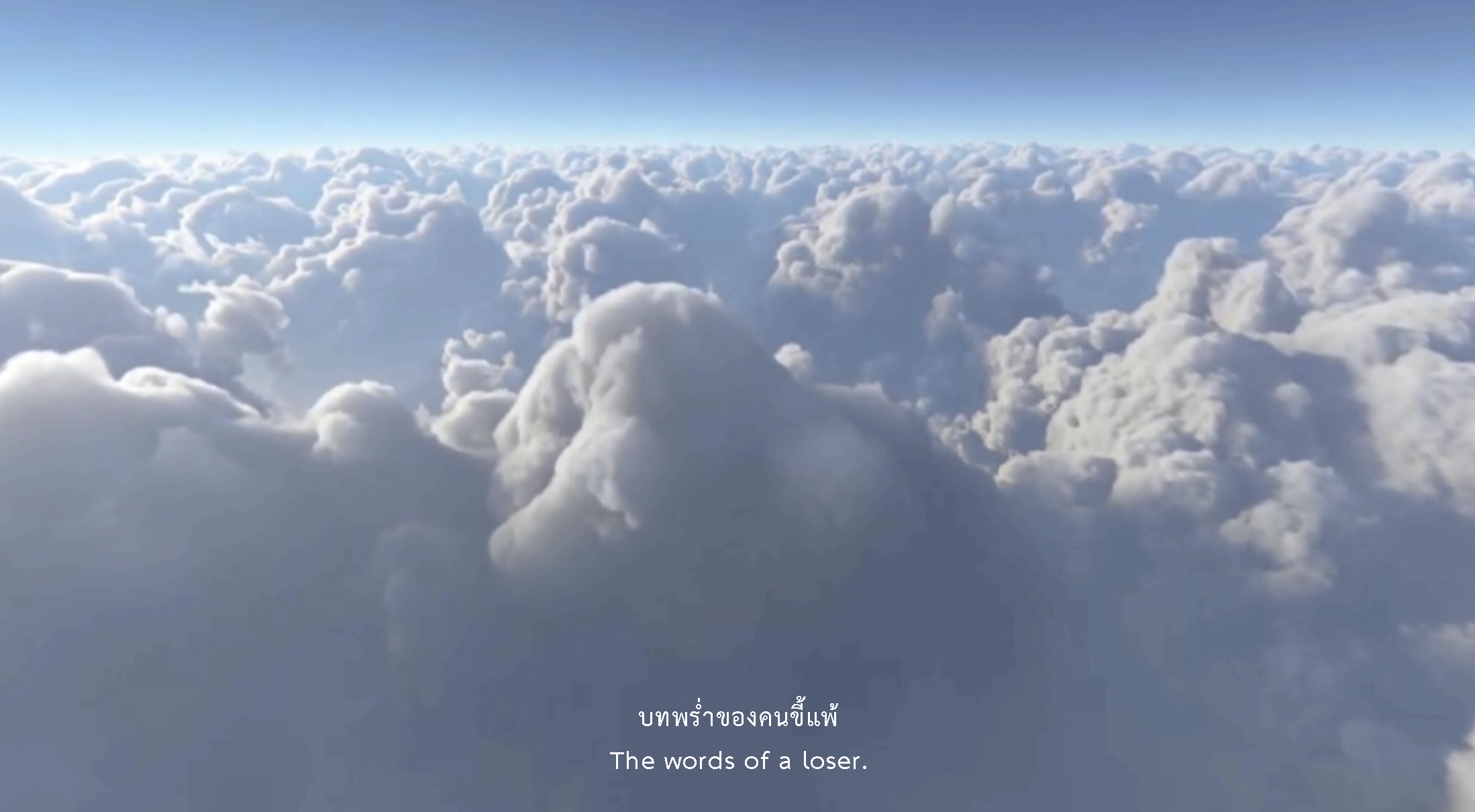
Asst. Prof. Anupong Charoenmitr

Abstract :
The work “The Words of a Loser” is a representation of thoughts. To show the journey to a space of hope while still revolving around its impact on everyday life. Viewers may see an image of humanity that is complex and sensitive. Through a journey that moves slowly and simply, with the clouds floating below.
Charles Sanders Peirce described the relationship between objects and representations as follows: It is an existential relationship with objects. This representation in the form of an index has clear identifying characteristics. The “index” can create meaning through the symbol system as well (Joan Gibbon, 2007). The picture shows the movement of the clouds. Images of moving clouds (index) are therefore used to represent memories and despair. The audience will be taken on a journey of telling stories of the past, and memories, and seeking hope. If the destination is to escape from hopelessness It is the border that is as far as the eye can see. The long horizon Humans could reach that border just by watching. It can be compared to the meeting of the ground and sky at a level line. It’s moving closer, but it seems as if it’s the same distance as before.
The process of creating this work is therefore like an exploration of mental image. Cleansing the memory of broken faith and hope. The viewer will recognize human frailty. Complex feelings change all the time. The murmuring that floats in the air, the drifting, the exhaustion of thoughts. Leading to connections and sharing difficult experiences through video installations.
Objectives :
1. To reflect the content of memories and hopes In the context of moving images in the visual arts
2. To develop ideas and the physicality of the video installation
3. To create a new perceptual experience for viewers of the work.
Conceptual Framework :
Ideas for creating video installations. It reflects the pursuit of hope through travel. Go to a hypothetical area believed to be “The destination of hope”. Use Appropriation Art as a visual representation of ideas. The works are told from a unique perspective through depicting, questioning, and showing the impact of life. Visual representations work together with sounds. To invite viewers to explore ideas in video installations
Process / Methodology :
1. Study information from the document section
2. Analysis to determine the conceptual framework and process
3. Design of work and installation work
4. Creating works through writing storylines
5. Selecting successful images to create works
6. Image sequencing and file export
7. Installation of the work
8. Analysis and summary of results from project implementation
Techniques and Materials :
Video Installation
Result / Conclusion :
The creative research in this project is to explore and create new possibilities in the form of video installations. By studying concepts, content, and artistic styles. The results can be summarized as follows.
1. Creating or simulating a thought space: This work uses the image of “clouds” to show the perspective of the sky moving above the clouds. It represents the meaning of a place, a situation, and a state of endless movement.
2. Dialogue: The dialogue is presented in a monotone tone to convey meaning and connection with the audience’s diverse experiences. The nature of the speech occurs in the form of descriptions and questions in a never-ending loop. To reflect the state of mind that cannot be escaped
3. Symbols: Use the image of “clouds” as an “index” to convey meaning through hidden symbols. Images of movement working with time may reflect many aspects of thinking. For example, floating in the sky may represent desire or failure or a symbolic movement that represents the point of infinity.
References :
Gibbons, J. (2007). In Contemporary Art and Memory. http://dx.doi.org/10.5040/978075560
4012.005